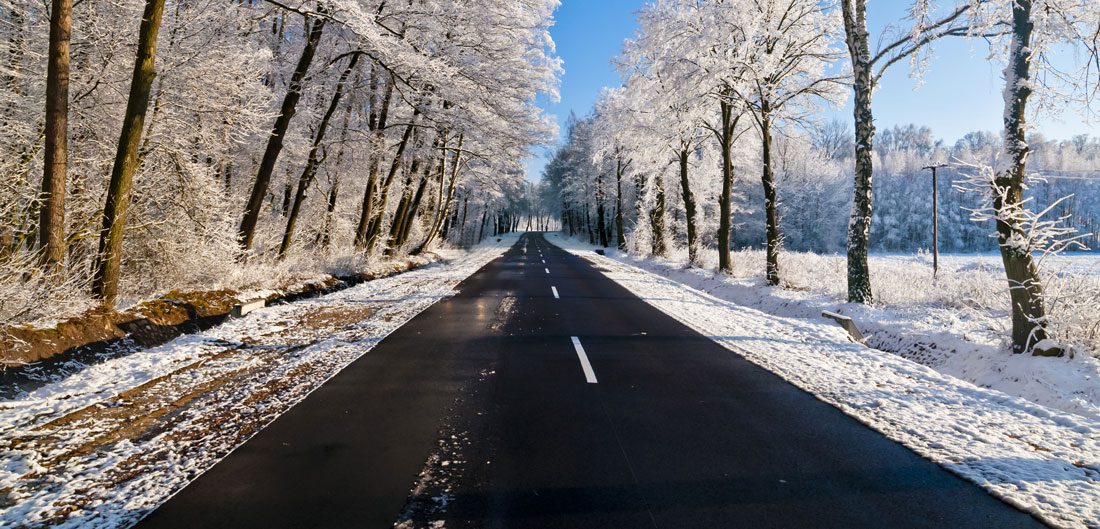From snow to sleet to freezing rain, severe weather conditions can make winter driving especially difficult. But perhaps none is more dangerous than black ice. That’s because, unlike snow and sleet, black ice can be practically invisible to an unsuspecting driver.
Related: 7 Dangerous Winter Driving Myths… Debunked
The safest thing to do is stay home when conditions call for icy roads – but of course, that’s not always possible. So, what can you do? Keep reading to find out how to handle this all-too-common winter hazard.
What is black ice?
Black ice is a thin layer of ice that can form on road surfaces in cold weather. It gets its name because the depth of the ice makes it practically invisible on pavement. This invisibility is what makes black ice such a dangerous driving surface.
How does black ice form?
Black ice occurs when snow or moisture from the air freezes rapidly, attaching itself to the frozen pavement. Unlike freezing rain, which can appear white or translucent due to trapped air bubbles, black ice is almost perfectly clear.
Where can you commonly find black ice?
Black ice is more common on roads that receive little or no sunlight because the pavement temperature can stay below freezing, even as the air temperature warms. You’re also likely to find it on seldom-used back roads, as well as tunnels, underpasses, and bridges.
How do you know if you are driving on black ice?
Because you can’t see black ice, you’ll first notice it when you feel your car start to slide or lose traction. If small shifts in your steering seem to generate an exaggerated response from your vehicle, it’s a sign that you may be driving on black ice.
What techniques should you use while driving on black ice?
First, slow down in conditions when black ice can form. When you reduce your speed, you lessen your chance of skidding. When conditions are right for black ice, it’s best not to use cruise control. Avoid any urges to make jerky, reactive movements that could cause skidding – or an accident. Slow speeds and small steering inputs are key to safely navigating black ice.
How can you recover from skidding on black ice?
For front-wheel and all-wheel drive cars, turn your steering wheel into the skid. Change the direction of your steering if the skid takes you in another direction. Maintain your speed and don’t suddenly apply the brakes or gas pedal. Push in your clutch if you have a manual transmission. Steer your car in the direction you want to go. This may mean counter-steering if the back of your vehicle swerves away from this direction. Resist slamming on your brakes if you start to skid.
Related: Should I Pump My Brakes When Driving on Ice?
Be gentle with your steering inputs. An overreaction could send your vehicle’s back end in the opposite direction. After straightening your vehicle, apply gentle pressure to the accelerator.
How can I stay safe in winter driving conditions?
Good tires can be your best defense against unpredictable winter roads. Invest in a set of sturdy all-season tires with high traction and good tread depth. If you live in a consistently snowy area, snow tires might be a better fit (check out Read more in our guide to winter and snow tires). Another thing that can give you peace of mind is having the right auto insurance. After all, accidents can — and do — happen, so you’ll want to make sure your coverage can go the distance. At Miller’s Insurance, our promise is simple: to be there when you need us. Learn more about auto insurance from Miller’s or contact us to learn more.
This article is brought to you by our friends at Erie Insurance. Miller’s would like to extend its gratitude to Erie Insurance for both being a wonderful business ally and for letting us use the articles found on their blog, Eriesense.

